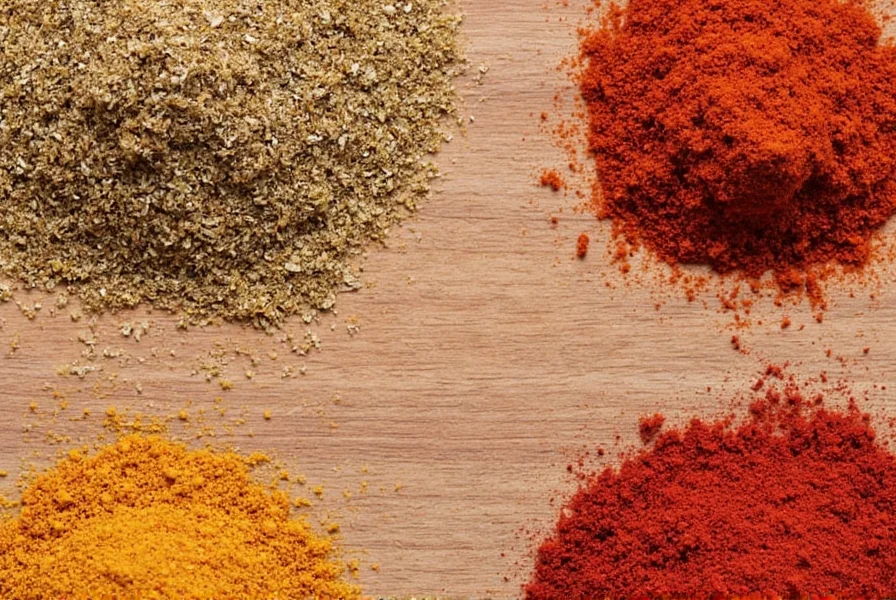Table of Contents
Introduction
Pork rib tips are small, meaty sections cut from the lower part of a pig's rib cage, near where the ribs meet the sternum. They contain a mix of meat, fat, and cartilage, making them incredibly flavorful when cooked properly. This guide provides expert advice on selecting, seasoning, and cooking pork rib tips for tender, delicious results every time.
Why Pork Rib Tips?
Pork rib tips are often overlooked but offer exceptional value and versatility. Their high fat content ensures tenderness, and they're budget-friendly compared to premium cuts. Here's why they deserve a spot in your kitchen:
- Taste: Rich, savory flavor that absorbs spices deeply.
- Versatility: Perfect for grilling, braising, slow-cooking, or stir-frying.
- Cost: Typically 30-50% cheaper than full racks of ribs.
Spice Basics for Pork Rib Tips
Proper seasoning transforms pork rib tips from ordinary to extraordinary. Here's a professional spice blend and pairing guide:
| Spice/Seasoning | Flavor Profile | Best Pairings | Recommended Quantity per 1lb |
|---|---|---|---|
| Cumin | Earthy, slightly nutty | Mexican, Indian, Middle Eastern cuisines | 1 tsp |
| Paprika | Sweet, smoky, or hot | BBQ, chili, Spanish dishes | 1.5 tsp |
| Ginger | Sharp, zesty | Asian, stir-fries, marinades | 1 tsp grated |
| Garlic | Pungent, aromatic | Italian, Mediterranean, general use | 2 cloves minced |
| Chili Powder | Spicy, warm | Mexican, Tex-Mex, spicy dishes | 1 tsp |

Pro tip: Marinate for at least 2 hours (ideally overnight) in a mixture of spices, 1 tbsp olive oil, and 1 tbsp apple cider vinegar for maximum flavor penetration and tenderization.
Cooking Techniques That Work Wonders
Each cooking method brings out unique flavors and textures. Follow these expert steps for perfect results:
Grilling
Preheat grill to 375°F (190°C). Sear rib tips for 5 minutes per side over direct heat, then move to indirect heat. Cook for 25-30 minutes total, turning occasionally, until internal temperature reaches 195-205°F. Brush with sauce during the last 5 minutes for caramelization.
Braising
Season rib tips, then sear in hot oil for 3 minutes per side. Add 2 cups broth, 1/2 cup red wine, 1 diced onion, and spices. Cover and simmer on low heat for 1.5-2 hours until fork-tender. Remove lid for last 15 minutes to thicken sauce.
Slow-Cooking
Place seasoned rib tips in slow cooker with 1 cup broth and aromatics. Cook on LOW for 7-8 hours or HIGH for 4-5 hours. Check internal temperature: 195-205°F ensures collagen breakdown for melt-in-your-mouth texture.
Stir-Frying
Precook rib tips using any method above. Slice into 1-inch pieces. Heat 1 tbsp sesame oil in wok, add vegetables (bell peppers, onions), then stir-fry pork for 3-4 minutes. Finish with soy sauce, ginger, and garlic.
Buying Guide: How to Choose the Best Pork Rib Tips
Quality starts at the store. Follow these USDA guidelines for selection:
| Product Type | Key Features | Best For | Price Range (per lb) |
|---|---|---|---|
| USDA Choice Grade | Well-marbled, consistent quality | Grilling, smoking | $4.50-$6.00 |
| Organic/Free-Range | Hormone-free, pasture-raised | Health-conscious cooking | $6.00-$8.00 |
| Pre-Marinated | Ready-to-cook seasoning blend | Quick weeknight meals | $5.00-$7.00 |
| Whole Ribs (untrimmed) | Uncut for custom portioning | Professional chefs | $3.50-$5.00 |
Selection tips: Look for bright pink meat with white fat marbling, no discoloration or off-odors. Avoid packages with excess liquid or damaged packaging. For food safety, choose products with USDA inspection stamps.
Frequently Asked Questions
What are pork rib tips exactly?
Pork rib tips are small, meaty sections cut from the lower portion of a pig's rib cage near the sternum. They contain a mix of meat, fat, and cartilage, which breaks down during cooking to create tender, flavorful results.
How long should I cook pork rib tips?
Cooking time varies by method: Grilling (25-30 mins), Braising (1.5-2 hours), Slow-Cooking (7-8 hours on LOW). Always use a meat thermometer to confirm internal temperature reaches 195-205°F for optimal tenderness.
What's the best way to tenderize pork rib tips?
Slow, low-temperature cooking breaks down connective tissues. Marinating with acidic ingredients (vinegar, citrus juice, or wine) for 2+ hours before cooking also tenderizes meat while adding flavor.
Can I use pork rib tips in place of regular ribs?
Yes, but with adjustments. Pork rib tips have more cartilage and connective tissue than spare ribs, requiring longer cooking times. They're ideal for dishes where melt-in-your-mouth texture is desired, but not for crispy, structured ribs like St. Louis-style.
How do I know when pork rib tips are fully cooked?
They're fully cooked at 195-205°F internal temperature. At this range, collagen breaks down completely, resulting in tender meat that pulls away easily from the bone but isn't mushy.
What are some common mistakes when cooking pork rib tips?
Common mistakes include: cooking at too high heat (causes toughness), insufficient marinating time, not reaching target internal temperature, and skipping the sear step before braising or slow-cooking.
Conclusion
Pork rib tips deliver exceptional flavor and value when prepared correctly. By selecting quality cuts, using precise spice blends, and mastering the right cooking techniques, you can transform this affordable cut into restaurant-quality dishes. Remember: patience during cooking and attention to internal temperature are key to perfect results. Happy cooking!










 浙公网安备
33010002000092号
浙公网安备
33010002000092号 浙B2-20120091-4
浙B2-20120091-4